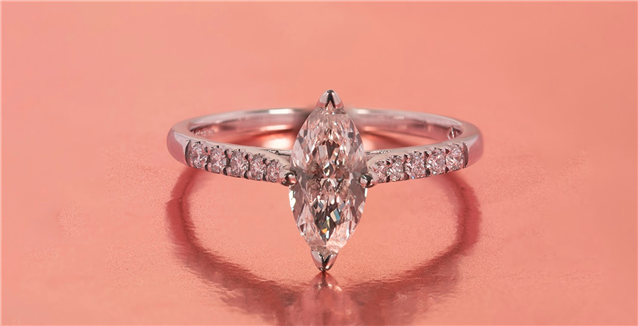What is a Lab Created Diamond?
Over time, buying habits of consumers change. Millennials and Generation Z have become more ethical consumers, as they are more aware of the damage we as humans are doing to our planet. One such choice has been to turn to lab created diamonds rather than traditionally mined diamonds.
Laboratory grown diamonds are genuine diamonds that are made from a mined diamond seed by scientists using innovative technology. This is instead of extracting the stone from the earth.
These types of diamonds gained worldwide attention in 2019, when Meghan Markle wore a pair of sparkling drop earrings which featured stones that had been created in a lab in just five days. With nearly 70% of millennials considering buying a lab alternative to natural diamonds, man made diamonds are seemingly here to stay; more consumers are opting for lab grown diamond rings. Read on below to find out more about these precious stones.
How are Diamonds made in a lab?
There are two ways that diamonds are created in a lab, but both ways replicate the extreme pressure and heat of the Earth’s crust where diamonds are formed. Both also make use of a diamond “seed”.
The first method involves using a High Pressure High Temperature (HPHT) system, where the seed is put alongside pure graphite carbon and exposed to temperatures of 1500 degrees celsius, which is pressurised to around 1.5 million pounds per square inch in the chamber.
Most recently, another technique was discovered known as Chemical Vapor Deposition (CVD). In this process, the seed is placed in a sealed chamber filled with carbon-rich gas and heated to 800 degrees celsius.
The improvement in technology and the speed at which diamonds can be created has created a new competition between lab made diamonds and mined diamonds.
Guilt-free gems
Man made diamonds are a fast-growing trend in the jewellery industry. They appeal to younger diamond buyers because of their price, transparency, and their limited impact on the environment. According to the Antwerp World Diamond Centre (AWDC), this segment of the market has increased between 15 and 20%. As more jewellers produce their own lab diamonds, we expect this growth to continue.
The debate over their positive impact on the environment rolls on as research funded by diamond mines looks to keep mined diamonds as the more appealing stone. Diamond Foundry says it takes “an entire factory more energy” to extract diamonds from the Earth than it does to create them in the lab. The Diamond Council has also stated that 250 tonnes of Earth is shifted to create every single carat of diamond, which is having a damaging effect on the planet.
Do they look the same as Natural Diamonds?
When placed side-by-side, it is hard to decipher which stone is the lab grown one and which is the mined diamond. If you were to analyse each stone, you will find that synthetic diamonds are chemically, physically and visually 100% real diamonds.
When tested, lab grown diamonds will show as real diamonds. While specialist equipment can show which diamond was mined or made in a laboratory, even the most skilled gemologists cannot spot the difference, unless under extreme magnification.
Difference between Lab Grown Diamonds & Diamond Simulants
There is a vast difference between lab diamonds and diamond simulants. Diamond stimulants, including cubic zirconia and moissanite, look similar to diamonds but aren’t proper carbon crystals. Stimulants also don’t have the same chemical and physical properties as mined diamonds, so are sold at much lower prices than lab made diamonds. It’s also easier to spot a simulant with the naked eye, when compared to a natural or man made diamond.
The thermal conductivity of natural and lab grown diamonds sets them apart from cubic zirconia when handled by diamond testers. Lab diamonds can also be confused with moissanites, as they have similar electrical conductivity. However, gemologists can tell them apart because of their differing refractive properties; moissanites are double refractive while diamonds are single refractive.
Do the 4cs still matter with Lab Grown Diamonds?
Just because a lab grown diamond is made by a person, this doesn’t mean the stone is flawless. Similarly to natural diamonds, lab diamonds are grown and cut with imperfections. When selecting a diamond, you should always look at the colour, clarity, cut and carat.
You must remember that even a lab-grown diamond can be cut poorly, look discoloured, and have inclusions. As with natural diamonds, these elements will dictate how much the diamond will cost.
How the Price of Lab Diamonds Differs
While they may look the same, the price of artificial diamonds when compared to natural diamonds is starkly different. Depending on the 4Cs (Carat, Cut, Colour and Clarity), the price can be around 30-70% less expensive than mined diamonds. For those looking to save money and get really creative with their diamond jewellery, synthetic diamonds are a great option.
Do Lab Grown Diamonds come with a quality certificate?
A diamond certificate is a document created by a third-party lab that explains a diamond and its unique characteristics. Each certified diamond is evaluated on merit by their gem quality.
Because lab grown diamonds are 100% diamonds, they are given a quality certificate. The information on the certificate includes Cut, Clarity, Carat, Weight and more. The certificate allows you to make the right choice when comparing diamonds graded at a similar level.
Should you buy Lab Diamonds?
Science now makes it possible to create beautiful, sparkling, high-quality diamond jewellery at a fraction of the price of mined diamonds. Whether you’re looking to buy a diamond ring or engagement ring, seriously consider lab grown diamonds.






 Lab Diamond Clarity: What to look for
Lab Diamond Clarity: What to look for Lab Grown Diamonds vs Cubic Zirconia: What's the Difference?
Lab Grown Diamonds vs Cubic Zirconia: What's the Difference? 10 Interesting Facts about Pearls
10 Interesting Facts about Pearls How Big is a 1-Carat Diamond?
How Big is a 1-Carat Diamond?